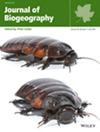Species Distribution Models for Mesopelagic Mesozooplankton Community
Abstract
Aim
We aimed to enhance our understanding of the distribution of mesopelagic mesozooplankton (MM) using species distribution models, assess the performance of various modelling techniques, identify key environmental predictors for MM distribution and compute their habitat suitability indices.
Location
Our study focused on the mesopelagic zone globally, with data analysed from different oceans.
Taxon
Our focus was primarily on mesopelagic mesozooplankton, gathering data on 861 different species from the Mesopelagic Mesozooplankton and Micronekton (MMM) Database.
Methods
We used an ensemble of species distribution models, applying 10 different modelling algorithms and three multi-model ensemble approaches. We explored two important factors that can affect model performance: subsampling and the choice of background points. We also estimated the relative importance of various environmental conditions such as mixed layer depth, temperature, salinity, net primary productivity, euphotic zone depth and dissolved nitrate concentration on the distribution of these species.
Results
Euphotic zone depth, salinity and dissolved nitrate concentration were identified as the most important variables for explaining the distribution of mesopelagic mesozooplankton. The ensemble modelling results were robust in areas with abundant observational records, but high uncertainty was observed in data-limited regions. We found a patchy habitat suitability map for zooplankton when modelled within their native range, largely due to uneven sampling. Unrestricted range models yielded smoother patterns but could inaccurately project species in areas where they do not occur.
Main Conclusions
Our study highlights the need for increased sampling effort in data-limited regions to improve the accuracy of mesopelagic species distribution models. Despite some inaccuracies, unrestricted range models, assuming ecological equivalence (where different species occupying a similar ecological niche in different geographical regions or different ecosystems exhibit similar adaptations and behaviours), provide a reasonable comparison for habitat suitability maps and model performance. It also confirms the significant impact of certain environmental conditions on mesozooplankton distribution.


 求助内容:
求助内容: 应助结果提醒方式:
应助结果提醒方式:


